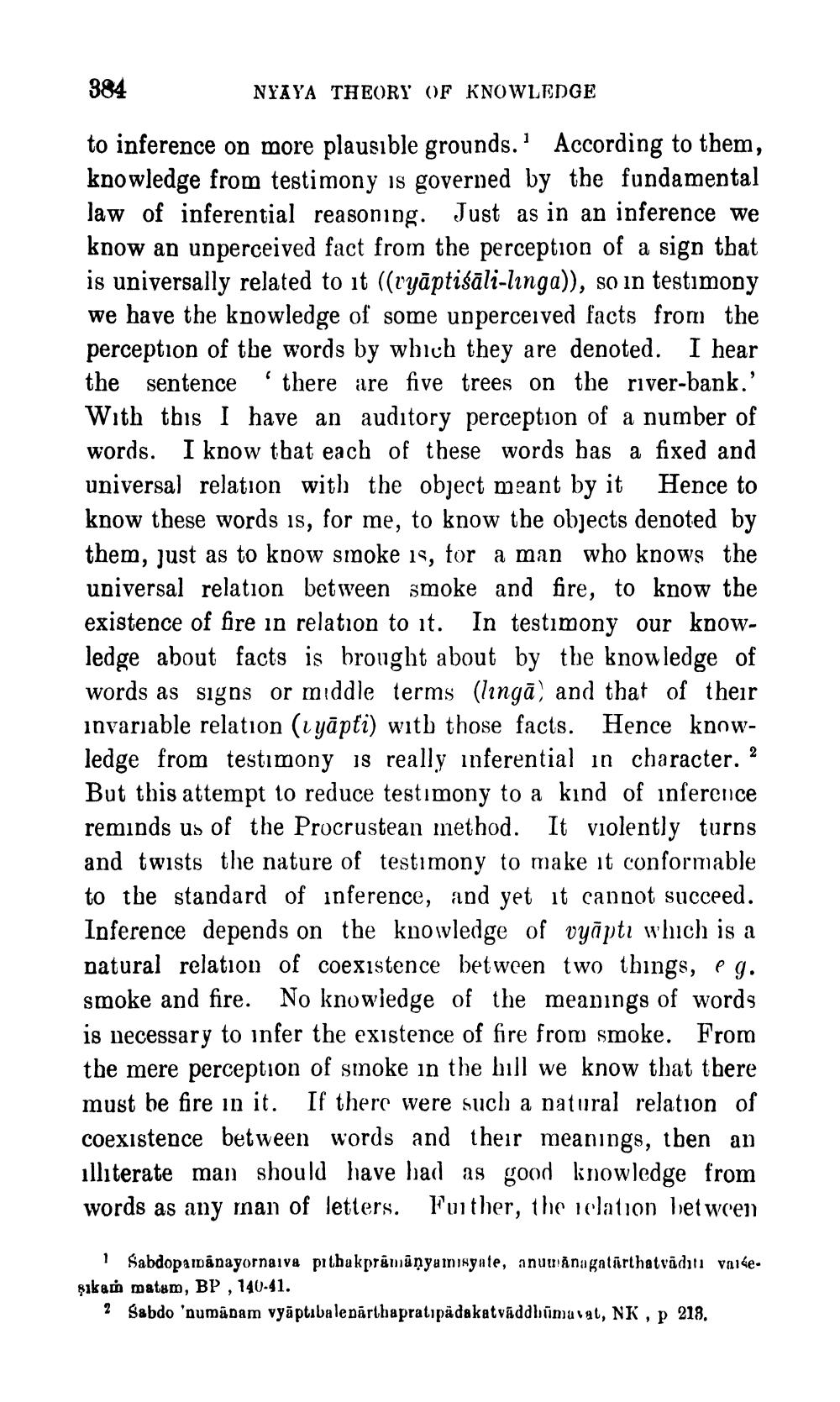________________
384
to inference on more plausible grounds. According to them, knowledge from testimony is governed by the fundamental law of inferential reasoning. Just as in an inference we know an unperceived fact from the perception of a sign that is universally related to it ((ryāptiśāli-linga)), so in testimony we have the knowledge of some unperceived facts from the perception of the words by which they are denoted. I hear the sentence 'there are five trees on the river-bank.' With this I have an auditory perception of a number of words. I know that each of these words has a fixed and universal relation with the object meant by it Hence to know these words is, for me, to know the objects denoted by them, just as to know smoke is, for a man who knows the universal relation between smoke and fire, to know the existence of fire in relation to it. In testimony our knowledge about facts is brought about by the knowledge of words as signs or middle terms (lingā) and that of their invariable relation (iyāptî) with those facts. Hence knowledge from testimony is really inferential in character. But this attempt to reduce testimony to a kind of inference reminds us of the Procrustean method. It violently turns and twists the nature of testimony to make it conformable to the standard of inference, and yet it cannot succeed. Inference depends on the knowledge of vyapti which is a natural relation of coexistence between two things, eg. smoke and fire. No knowledge of the meanings of words is necessary to infer the existence of fire from smoke. From the mere perception of smoke in the hill we know that there must be fire in it. If there were such a natural relation of coexistence between words and their meanings, then an illiterate man should have had as good knowledge from words as any man of letters. Further, the relation between
NYAYA THEORY OF KNOWLEDGE
1
2
1 Sabdopamānayornaiva pithakpramanyamisyate, anumanagatarthatvaditi vaikeşıkam matam, BP, 140-41.
2 Sabdo 'numanam vyaptıbalenarthapratipadakatvaddhumavat, NK, p 218.




